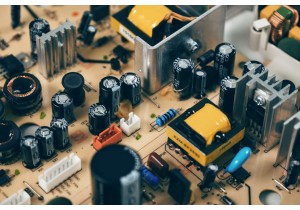Aluminum electrolytic capacitors are critical in electronics, from gaming PCs to solar power systems. Their ability to store large amounts of energy in small sizes makes them irreplaceable. This article explains their working principles, industry demands, and actionable strategies to maximize their lifespan.
What Aluminum Electrolytic Capacitors Do
These capacitors store electrical energy using an aluminum foil coated with oxide (insulator) and a liquid electrolyte. When powering devices like LED TVs, they smooth out voltage fluctuations to prevent screen flicker.
Daily Example: In a refrigerator’s compressor, they absorb voltage spikes during motor startups. If the capacitor fails, the fridge may struggle to cool consistently.
Industry Trends Driving Demand
-
Renewable Energy: Solar inverters require capacitors that endure temperature swings and high ripple currents (rapid charge/discharge cycles).
-
Electric Vehicles (EVs): Battery management systems rely on capacitors to stabilize voltage during acceleration.
-
5G Networks: Server power supplies need capacitors with 10+ year lifespans for 24/7 operation.
Market Shift: Manufacturers now focus on “long-life” capacitors (e.g., 10,000-hour ratings) to meet industrial and automotive standards.
3 Key Advantages Over Alternatives
-
High Capacitance: Store 10x more energy than ceramic capacitors of the same size.
-
Cost-Effective: Cheaper than polymer or tantalum capacitors for high-energy tasks.
-
Voltage Range: Available up to 500V, ideal for industrial motor drives and power grids.
Trade-Off: Shorter lifespan compared to solid-state capacitors if misused.
4 Factors That Shorten Capacitor Lifespan
1. High Temperatures
Heat accelerates electrolyte evaporation. A capacitor rated for 1,000 hours at 85°C lasts only 500 hours at 95°C.
Daily Example: In a gaming PC, placing capacitors near a GPU heat sink without cooling fans can cut their lifespan by half.
2. Voltage Overload
Exceeding voltage ratings stresses the oxide layer. A 25V capacitor in a 30V circuit may bulge or leak.
Fix: Use a 35V capacitor in a 24V car audio system to handle engine-start voltage spikes.
3. High Ripple Current
Ripple current (pulsing energy flow) causes internal heating. Continuous high ripple in a drone’s battery charger degrades capacitors faster.
Solution: Choose capacitors with ripple current ratings 20% higher than the circuit’s maximum.
4. Poor Storage or Installation
Storing capacitors in humid conditions corrodes terminals. Bending leads during installation cracks seals, letting electrolyte leak.
Daily Example: A DIY speaker amplifier failing after using capacitors left in a garage for two years.
5 Proven Strategies to Extend Lifespan
1. Temperature Management
-
Keep capacitors 10mm away from heat sources like power resistors.
-
Use 105°C-rated capacitors instead of 85°C types in HVAC control boards.
2. Voltage Derating
-
Apply the “80% rule”: Use a 50V capacitor in a 40V circuit.
-
In LED streetlights, a 63V capacitor handles voltage surges from power grids.
3. Optimize Ripple Current Handling
-
Parallel two capacitors to split ripple current stress in a server power supply.
-
Check datasheets for “ESR” (internal resistance)—lower ESR reduces heat.
4. Mechanical Protection
-
Use rubber mounts in washing machine motor drives to absorb vibrations.
-
Avoid bending capacitor leads beyond a 90-degree angle during PCB assembly.
5. Regular Maintenance
-
Inspect for bulging tops or leaked electrolyte in factory machinery annually.
-
Replace capacitors preemptively after 7–8 years in solar inverters.
Case Study: Solar Inverter Lifespan Boost
A solar farm in Arizona faced capacitor failures every 3 years due to 45°C+ temperatures. By switching to 105°C-rated capacitors and adding cooling vents, lifespan increased to 8 years. This cut maintenance costs by 60%.
Common Mistakes to Avoid
-
Ignoring Operating Hours: A capacitor rated for 2,000 hours at 25°C lasts just 6 months in a 24/7 NAS drive.
-
Mixing Capacitor Ages: Replacing one faulty capacitor in a power supply can strain older units, causing cascading failures.
Future Innovations to Watch
-
Hybrid Capacitors: Combine aluminum electrolytic and polymer materials for higher ripple tolerance.
-
Smart Capacitors: Sensors embedded to monitor health in real-time, used in EV charging stations.
When to Replace Aluminum Electrolytic Capacitors
-
Visible Damage: Swollen casing or brown residue (dried electrolyte).
-
Performance Issues: A microwave taking longer to heat food signals weak capacitors.
-
Age: Replace units in critical medical devices after 75% of their rated lifespan.
Conclusion
Extending aluminum electrolytic capacitor lifespan hinges on temperature control, voltage derating, and mechanical care. Industry trends toward renewables and 5G demand more durable designs, but proper usage remains key. By applying these strategies, engineers and hobbyists can prevent failures in devices ranging from gaming rigs to solar farms.

